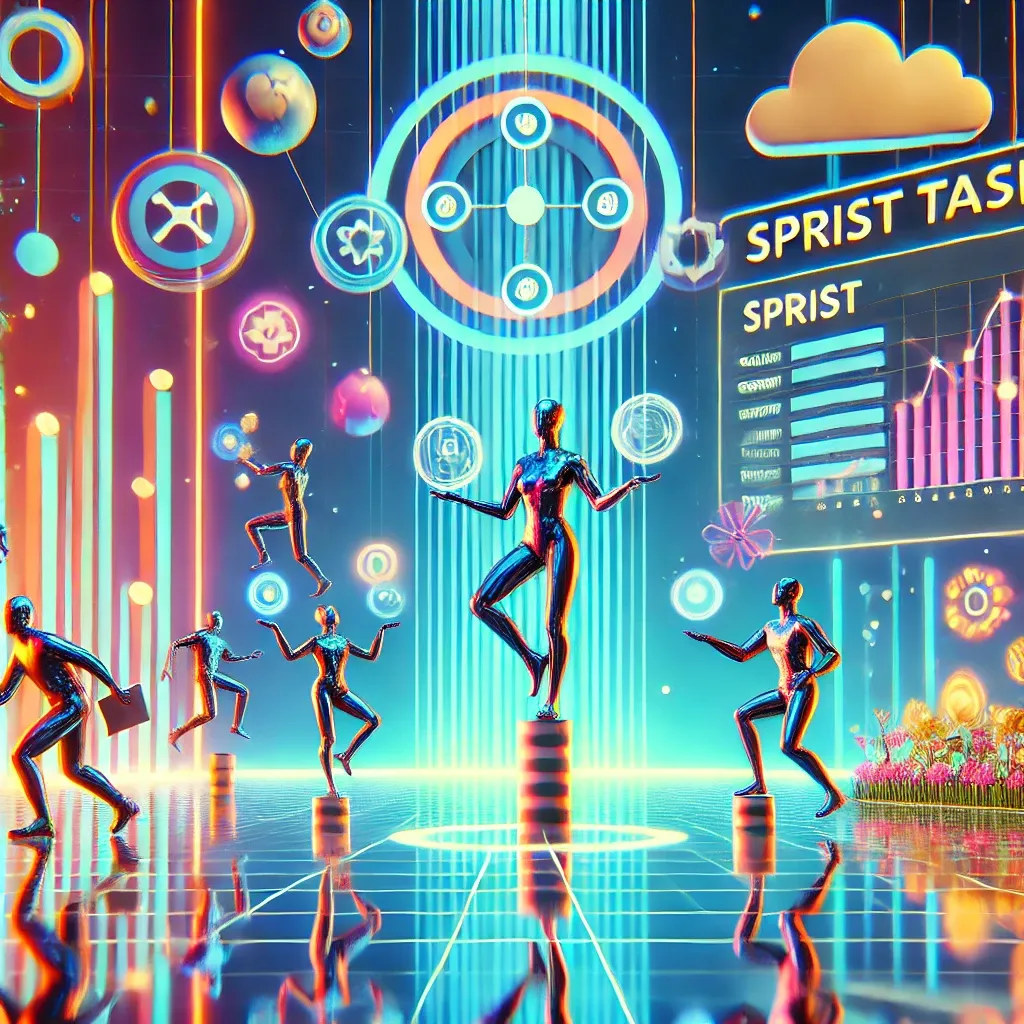Collaborating in Agile and Scrum Teams: Surviving the Circus Without Losing Your Cool
So, you've found yourself in an Agile or Scrum team. Congrats! You're now part of a new breed of engineers who think a "sprint" is a meeting on steroids and "backlog" sounds like a polite way to say your project is in deep trouble.

So, you've found yourself in an Agile or Scrum team.
Congrats! You're now part of a new breed of engineers who think a "sprint" is a meeting on steroids and "backlog" sounds like a polite way to say your project is in deep trouble.
It's chaotic, it's fast, and sometimes it feels like you're juggling flaming bowling pins while blindfolded—but don't worry, you're not alone.
Let's discuss how you can not just survive but thrive when collaborating in these oh-so-agile teams.
Agile and Scrum aren't magic solutions for fixing dysfunctional teams.
They're frameworks—tools that can help you, assuming you actually use them correctly (and that Todd from QA stops deciding to go rogue).
Agile is a mindset, a philosophy that values flexibility, individuals, and quick delivery.
Scrum is a specific way of making Agile work, full of rituals like stand-ups, sprints, and retrospectives.
If Agile is your journey to Mordor, Scrum is the map that tells you when to take a left at the giant, flaming Eye of Sauron.
These frameworks help give software engineers something we crave: structure in the chaos.
Daily standups are the way scrum teams navigate these issues.
They’re supposed to be short, sharp, and sweet—no more than 15 minutes.
But let's be real: they can also turn into a never-ending saga about someone’s Kubernetes issue.
The trick here is to stay concise.
Say what you did, what you're doing, and what’s blocking you.
Resist the urge to solve problems on the spot—that’s what follow-up meetings are for.
And if the team veers off-topic, politely guide things back on track (or mentally prepare your grocery list; your choice).
Remember, the goal is alignment, not to show off how smart you are.
Sprints are not Olympic races where you should break yourself to the point of collapse. They’re controlled bursts of productivity.
A sprint should have realistic goals that the team can achieve without feeling like they’re contestants in some twisted productivity reality show.
Prioritization is key here.
Your product owner will tell you everything is a top priority, but we all know that’s not true.
It’s okay to push back—gently.
You’re not a superhero (or if you are, you deserve better pay).
Burnout doesn’t lead to shippable software, it leads to mistakes, bugs, and you crying over your keyboard at 3 AM.
If you think retrospectives are pointless, you’re doing them wrong.
Retros are your time to be honest without being mean, and to fix what's broken.
Emphasizing team culture can help build a productive work environment.
Yes, it might sound touchy-feely, but retrospectives are how you get better as a team.
If a process sucked, say so—nicely.
If you have a brilliant idea for improving the workflow, speak up.
But don't turn the retro into a gripe fest.
The point is to improve, not just to complain about your product manager.
Keep it constructive.
Agile is all about communication.
It's people over processes, so you actually have to talk to your teammates.
Keep your communication open and clear to provide more context on working effectively with different disciplines.
Over-communicate if you have to. And please, dear developer, when someone sends a message in Slack asking for help, resist the urge to reply with just a cryptic emoji.
Be specific, be helpful, and understand that your peers can’t read your mind (or interpret your cryptic GIF collection).
Collaboration also means giving credit where it's due.
Got help from a teammate that saved your entire sprint from becoming a disaster?
Tell them! A simple "thanks" goes a long way.
Agile is a team sport, and nothing’s worse than feeling like your efforts are taken for granted.
Calmness is key when navigating conflicts
Look, everyone’s under pressure.
Deadlines are looming, features are half-baked, and Jenkins is doing whatever it does when it’s in a bad mood.
You’re going to clash with people, and that’s okay.
The key is to handle conflicts with empathy.
Put yourself in their shoes.
Maybe they’re being difficult because they’re stressed out about something that’s out of their control.
Instead of playing the blame game, focus on problem-solving.
It’s a lot harder to be frustrated with someone when you’re both working on a solution together.
Conclusion: Making Agile Work for You
Working in Agile and Scrum teams is all about being flexible, proactive, and empathetic.
Embrace the chaos, find the joy in short feedback cycles, and—most importantly—don’t forget to laugh.
Agile isn’t about being perfect; it’s about getting better, one sprint at a time.
If you can roll with the punches, communicate well, and keep a healthy sense of humor, you’ll not only survive this circus, but maybe even enjoy it.
Now go forth and collaborate like the agile beast you are (and maybe cut Todd some slack, yeah?).




